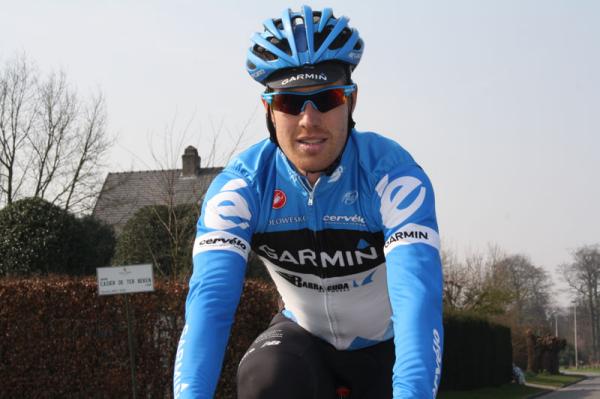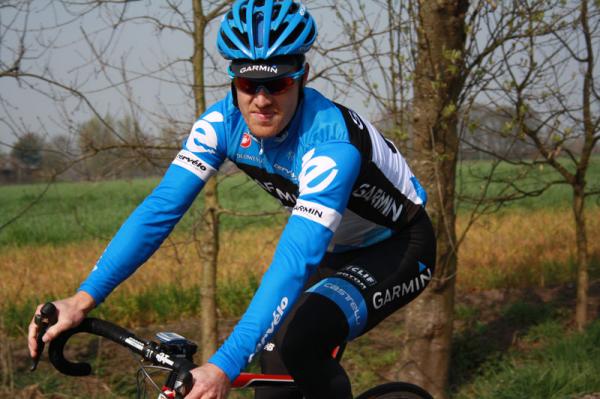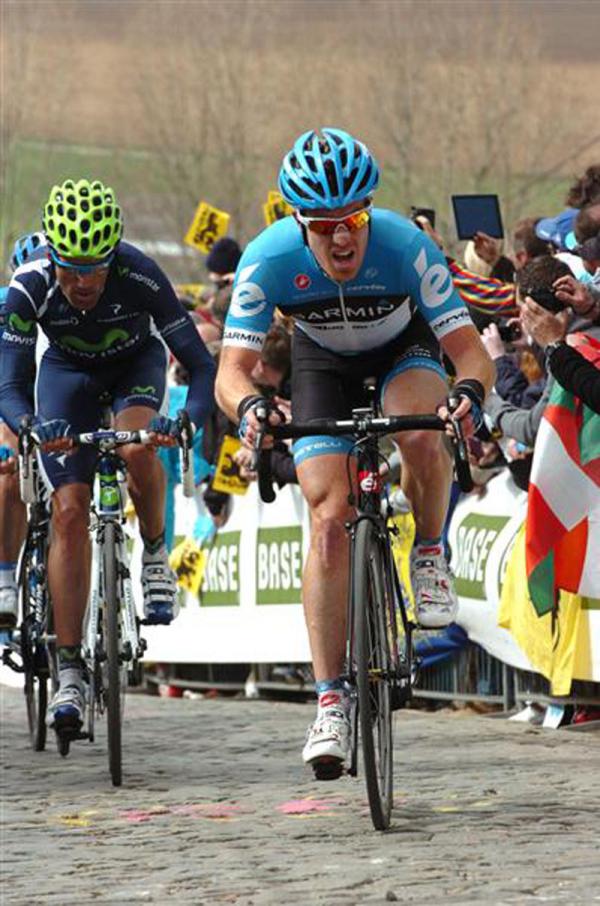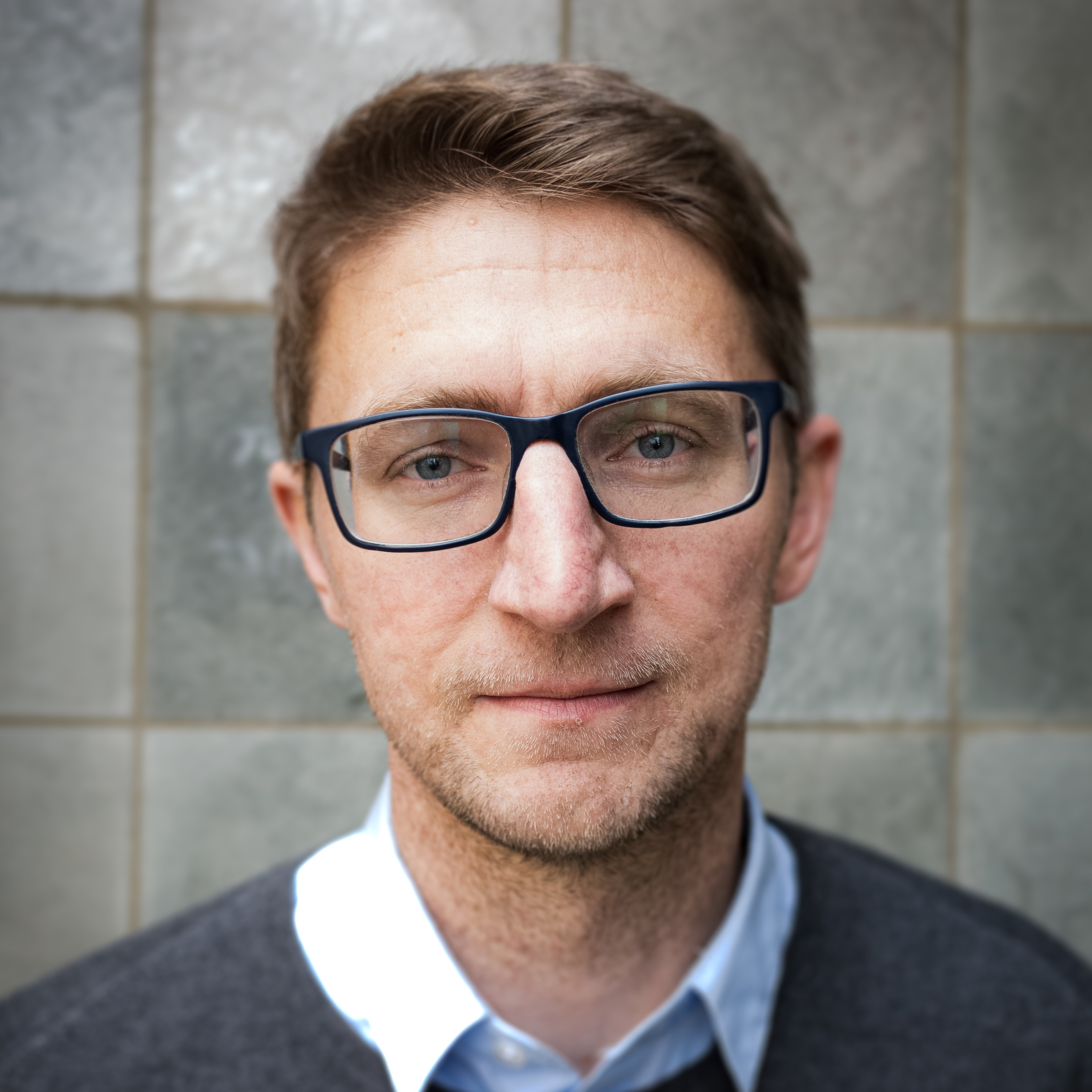Farrar takes aim at Scheldeprijs
Garmin-Barracuda rider on the new Tour of Flanders course



Fresh from a 200 kilometre stint off the front at the Tour of Flanders at the weekend, Tyler Farrar (Garmin-Barracuda) returns to the fray on Wednesday at Scheldeprijs, the Belgian semi-classic he won two years ago.
Farrar’s sights in the opening phase of the season have been focused squarely on the cobbled classics, at the expense of dedicated sprint training. Coming between the Tour of Flanders and Paris-Roubaix, but traditionally ending with a bunch sprint, Scheldeprijs presents an interesting challenge for the American.
“I won there two years ago, so I know I can do it,” Farrar told Cyclingnews in Ghent on Tuesday. “It’s true that my focus has been more on the cobblestones and on the classics than it has been on sprinting but I can still sprint pretty well, so we’ll see.”
A veritable who’s who of sprinting will be on the start line in Antwerp on Wednesday, even if world champion Mark Cavendish (Sky) is a notable absentee as he waits on the birth of his daughter. With the likes of Marcel Kittel (Argos-Shimano), Tom Boonen (Omega Pharma-QuickStep) and André Greipel (Lotto Belisol) on hand, a bunch finish in Schoten seems almost inevitable.
“It might still depend on what the weather does tomorrow,” Farrar warned. “It’s a sprinter’s race but sometimes it’s not a pure sprinter’s race. If it’s windy, there can be some crosswinds out on the farm roads, which can make things a bit more interesting.”
After his exploits on Sunday, Farrar has been looking to recover as best he can, both for Scheldeprijs and Paris-Roubaix. On Tuesday morning, he went out for a relaxed hour in the saddle alongside teammate Andreas Klier in the hinterland of Ghent.
“We went for an hour today and yesterday, just enough to move the legs a bit and get the blood flowing. You need to take it as easy as possible to recover, but you can’t lie in your bed the whole time either. I’m still a bit tired but that’s pretty normal. Sunday is one of the hardest days of the whole year, and you’re always a bit under for a day or two after it. I feel better now than I did yesterday and hopefully the legs will come around tomorrow.”
The latest race content, interviews, features, reviews and expert buying guides, direct to your inbox!
Off the front in Flanders
While Farrar will aim to stay in the protective boon of the peloton until the closing metres on Wednesday, the Tour of Flanders saw him take on the uncharacteristic role of early escapee. With the new route incorporating three ascensions of the Kwaremont and Paterberg, Farrar realised that he would be unable to repeat his 5th place finish of 2010.
“We thought the finish of the new course at Flanders would be too hard for me, so we looked at what I could do to help the team and the idea was to cover breaks from the beginning if a big group went,” Farrar explained. “If I hadn’t made the group, then I would have helped to position Sep [Vanmarcke] into the bottom of the Kwaremont the first two times.”
As it turned out, Farrar successfully infiltrated the day’s early break, and he was very prominent in ensuring that they stayed clear until the second climb of the Kwaremont. “The hope was that the break would survive until after the second lap of the Kwaremont and the Paterberg,” he said. “If they hadn’t got us until then, maybe I could have helped position Sep into the last climb. As it was, we got caught coming into the bottom of the Kwaremont the second time and when you’ve been off the front for five hours, you don’t have much hope of hanging on at that point.”
Sunday’s race saw no fewer than 47 riders finish within one minute of winner Tom Boonen, a statistic which adds weight to the general credence that the new, tougher course served as something of a deterrent to aggressive racing. Farrar felt that most riders were keen to keep something in reserve for the final circuit over the Kwaremont and Paterberg.
“I think it’s so hard that it created some negative racing. Everyone was afraid of the finish and just waited and waited and waited,” Farrar said. “I think they came up with too much of a good thing in a way. Yeah, you need hard climbs, but the old Flanders was already one of the hardest one-day races in the world, and there’s a limit to what we can sustain. It forced everyone to wait until later in the race to start attacking and be aggressive, because if you started throwing out bombs with 80k to go, you were going to come to a screeching halt the last time you hit the Kwaremont.”
Farrar does not, however, share in the pessimism prevalent among some of the new course’s most fervent critics. Once the experience of this 2012 race has been processed, he reckons that teams and riders might have a more confident approach to the Ronde in twelve months’ time.
“I think next year it will be raced a lot differently because people will know the circuit. No matter how many times you do it in training, it’s completely different in a race. Now that people have seen it and the way in unfolded, I wouldn’t be surprised if it played out a lot differently next year.”

Barry Ryan was Head of Features at Cyclingnews. He has covered professional cycling since 2010, reporting from the Tour de France, Giro d’Italia and events from Argentina to Japan. His writing has appeared in The Independent, Procycling and Cycling Plus. He is the author of The Ascent: Sean Kelly, Stephen Roche and the Rise of Irish Cycling’s Golden Generation, published by Gill Books.